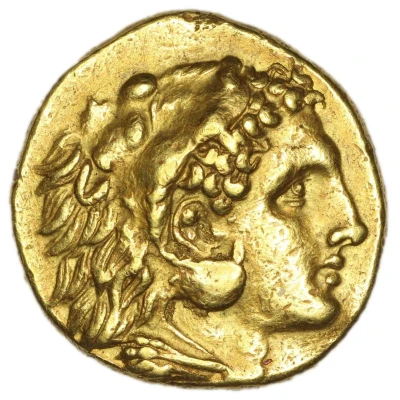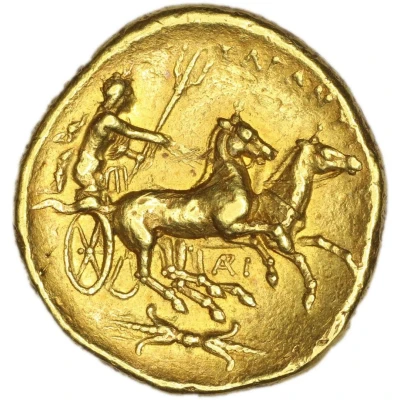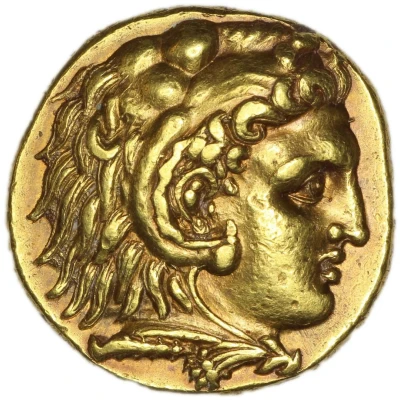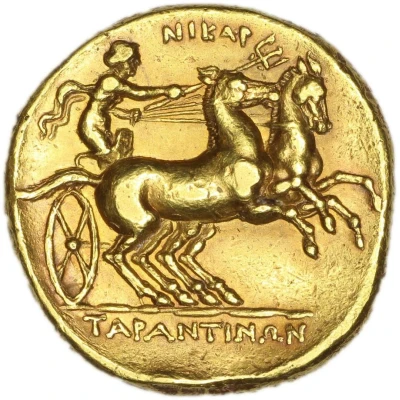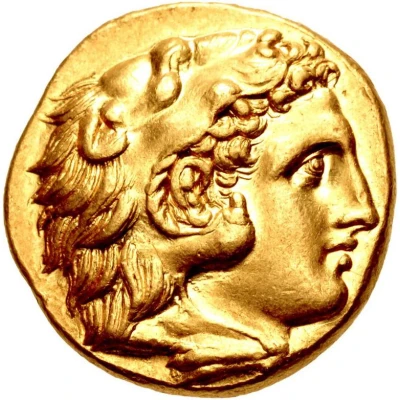
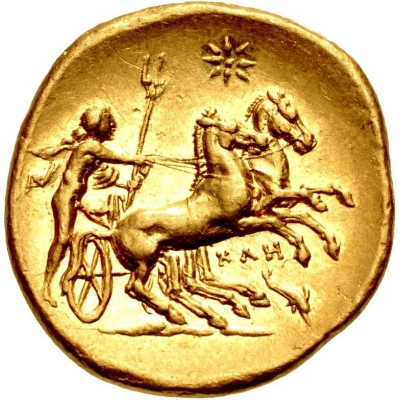

© Classical Numismatic Group, Inc.
Stater 281 BC - 276 BC
| Gold | 8.5 g | 18.5 mm |
| Issuer | Tarentum (Calabria) |
|---|---|
| Type | Standard circulation coin |
| Years | 281 BC - 276 BC |
| Value | Gold Stater (20) |
| Currency | Attic drachm |
| Composition | Gold |
| Weight | 8.5 g |
| Diameter | 18.5 mm |
| Shape | Round (irregular) |
| Technique | Hammered |
| Orientation | Variable alignment ↺ |
| Demonetized | Yes |
| Updated | 2024-10-10 |
| Numista | N#268553 |
|---|---|
| Rarity index | 100% |
Reverse
Tara (?), holding reins in right hand, trident in left, driving fast biga right; star above; below horses, KΛH above dolphin downward
Script: Greek
Lettering: KΛH
Comment
There is a divergence of opinion concerning the dating of this attractive gold issue of Tarentum, which displays a youthful head of Herakles resembling the Macedonian issues of Alexander III the Great and a reverse depicting a nude male youth holding a trident, probably Taras / Phalanthos, driving a biga. The lack of a civic ethnic and the control letters KΛH on the reverse led N. K. Rutter, in Historia Nummorum Italy, and Oliver Hoover in Handbook of Greek Coins Vol. I, to place their minting during the expedition of the Spartan commander Kleonymos, who crossed to Italy at Tarentum’s invitation circa 302 BC, to pay his large mercenary army. Wolfgang Fischer-Bossert, citing the support of S. Garraffo and G.K. Jenkins, places the issue during the more famous Italian expedition of Pyrrhos of Epiros, circa 281-276 BC. The type’s great rarity means there is little in the way of hoard evidence to support either side. However, their similarity to Pyrrhic bronze issues in Sicily and Pyrrhos’s strong desire to emulate Alexander the Great argue for the latter dating, in which case the KΛH refers to a magistrate rather than to Kleonymos.Interesting fact
The Stater coin from Tarentum (Calabria) was minted during a time of great cultural and artistic achievement in the city. The coin features an image of a mythical creature called a "Taras," which is a horse with the tail of a fish, and is said to represent the city's connection to the sea. The coin's design also includes an inscription that reads "TARAS," which is the ancient Greek name for Tarentum. This coin is not only a valuable piece of history, but it also showcases the artistic and cultural achievements of the ancient city.
